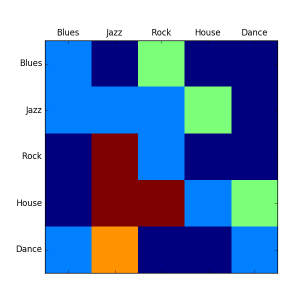python plot matrix
Python hosting: Host, run, and code Python in the cloud!
Matplotlib is a powerful tool in the Python ecosystem, especially when it comes to visualizing matrices and generating correlation diagrams. This guide provides an in-depth walkthrough of how to visualize a matrix correlation using Matplotlib.
Introduction to Matrix Visualization with Matplotlib
Matplotlib, a comprehensive library in Python, is predominantly used for plotting purposes. It offers compatibility with various graphical toolkits available for Python. If you’re looking to visualize data, Matplotlib is likely your go-to choice.
Related Course:
Defining a Matrix in Python
Before delving into plotting, it’s essential to understand the matrix definition. In this instance, we’ll be working with a 2x2 matrix along with a list named ‘groups’. For better clarity, the matrix is encompassed within double square brackets, especially when written in a single line.
1 | m = [ |
Matrix Visualization:
Caption: Correlation achieved using Matplotlib.
Generating a Matrix Correlation with Matplotlib
The subsequent code showcases the creation of a Matrix correlation diagram using Matplotlib. Let’s break it down:
1 | import matplotlib.pyplot as plt |
Here, we start by defining our matrix (m) and the groups list. The length is set equivalent to the groups’ size, and then, group names are allocated to both x and y axes.
Feeling inspired to explore more about Matplotlib? Navigate back to the previous topic and continue your learning journey!

Leave a Reply: